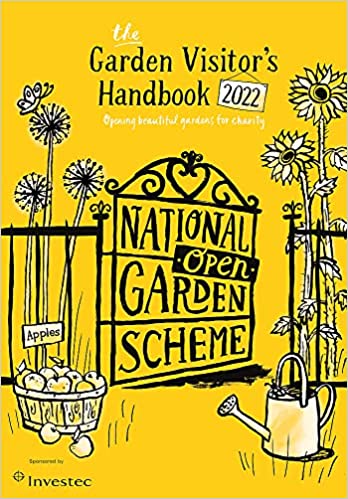Jill's Jots
Yellow for Spring only?
Okay, so why is it that gardeners will happily purchase yellow flowers in the Spring but at other times will just walk past any plant stand which is displaying an abundance of yellow flowers? What is wrong with the colour and why do so many gardeners say anything but yellow? Personally, I love the colour throughout the year and think it can add something special to a garden. But then I did once paint my bedroom lime green and orange with a bit of purple thrown in, so perhaps I can not the best person to be talking about colour!
Yellow is such a simple colour, the centre of the spectrum of light visible to humans and it reflects light so well. Monet recognized its value, painting his dining room canary yellow. A man after my own heart. Then, of course there was Van Gogh, a great admirer of yellow. Using it, not only as a contrasting colour but also extensively in his sunflower paintings. He also painted his house in Arles yellow, which he described as ‘buttery yellow’. Of course, this was at a time when commercially available paint colours were being manufactured including chrome yellow, first made in 1808 and cadmium yellow in 1820. I am also sure that I read somewhere, that a school painted their classrooms yellow to encourage creative thinking? So perhaps that is also why Van Gogh wrote “How beautiful yellow is!”
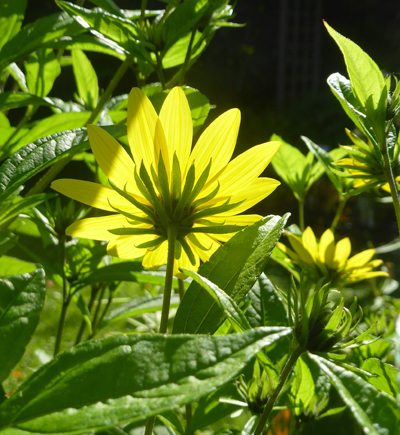
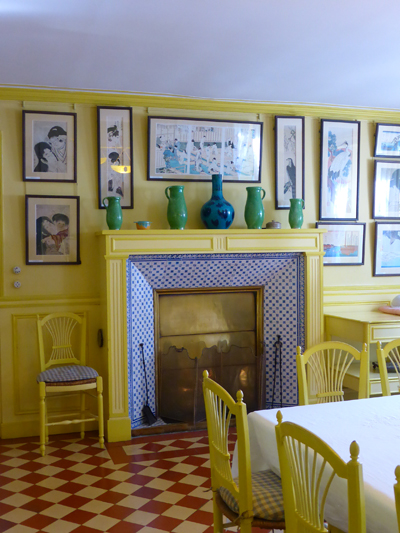
Yellow, also means custard to me, the favourite of our puds as children, whether it was on its own or with treacle sponge or Christmas pud, it seemed to go with everything and of course it had to be Birds Custard, a yellow nectar. I even liked custard, cooled slightly and added to my dish of ice cream! It was invented by a Birmingham chemist Alfred Bird in 1837, so certainly has stood the test of time and many a school dinner relied upon it!
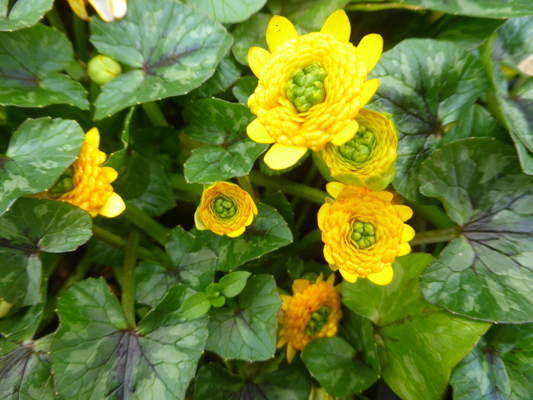
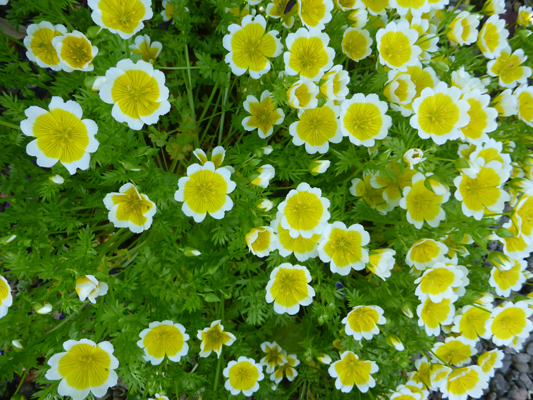
In the Spring, gardeners rave about daffodils, of which I have a bit of a love hate relationship. I am thrilled to see native daffs poking through leaf litter and nodding their delicate heads. They are definitely a harbinger of Spring. I was also pleased to see Anne Dryad’s delightful miniature daffs on a recent visit to her garden. Little gems. What I can’t stand are the big blowsy daffs which seem to be sold by the sack full, which people plant along roadsides, marring (to my eyes) some beautiful historic villages. I won’t mention double daffs, otherwise I will be on my hobby-horse! Then there are celandines, again the same relationship occurs, these doubles with their green centres are perfect to my eyes but I just have too many of the ‘ordinary’ celandines, they love our heavy clay. Of course, primroses, cowslips and oxlips are all very welcome and I expect a lot of gardeners may well agree. I also enjoy poached egg plant - Limnanthes douglasii, a self-seeding annual which shows fresh green leaf over the winter and then the rather fun and very cheering flowers during April and May, the foliage disappears quite quickly afterwards – perfect!
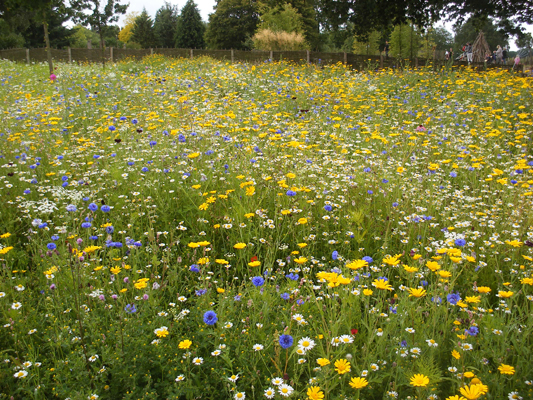
But mention yellow irises and folks’ noses turn up, although ‘Butter and Sugar’ a Siberian iris has been popular over the years, maybe it is the name! And we did manage to sell ‘Crackling Caldera’ to quite a few people, but on the whole yellow irises were a no-no. It seems that yellow is even more unpopular in the summer, try and sell a yellow Hemerocallis like ‘Corky’, despite it having super dark stems and flowers which dance above its foliage. Then think of Kniphofia, especially ’Brimstone.’ which make such a dramatic vertical statement, a real lift to the garden. Or equally Bulbinella hookeri. Some years ago, when Nori and Sandra Pope created that magnificent garden at Hadspen, a real exercise in colour, I recall standing and being amazed at their yellow borders. The way colour was picked out using both foliage and flower, using a green foliage plant to bring it all together. I couldn’t remember which foliage plant was used, but by consulting their book Colour by Design I see it was green fennel, it certainly worked brilliantly.
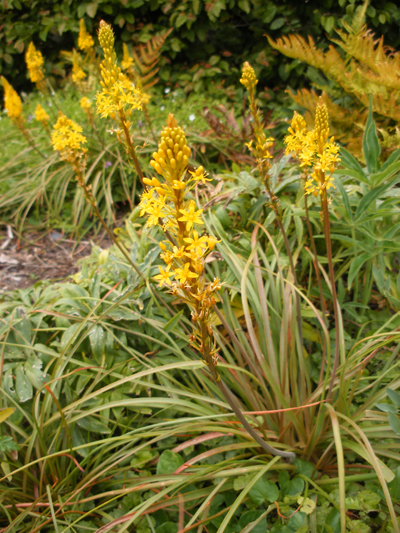
Keith Wiley is also not afraid of using yellow, as was his late wife Ros in her paintings. Some of his massed plantings have yellow drifting through them, moving the eye across the scene. Like Nori and Sandra Pope he also makes good use of yellow foliage, perhaps picking out a yellow flower and linking it with yellow foliage of Carex elata ‘Aurea’. I also admired a very acid lime green of Bupleurum on a recent July visit, which I could see making a dramatic splash, if paired with spikes of Lobelia ‘Hadspen Purple’. Back to my bedroom colours again!
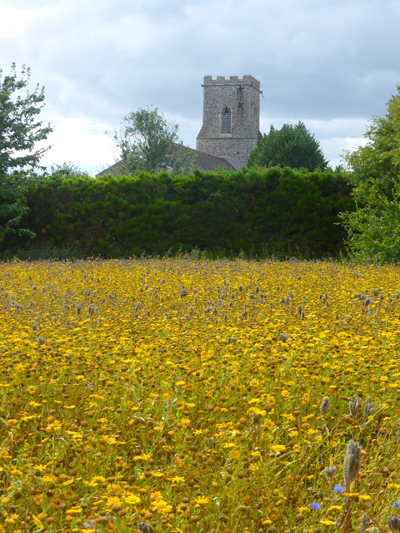
Once Autumn comes, then yellow comes back into favour to a certain extent. Think of the use of yellow in the meadow at East Rushton, a joy to behold but when we were there, but it was the least frequented part of the garden. The same applied to a meadow planting at RHS Wisley. Or the backs of Helianthus ‘Lemon Queen’, really exuding warmth and happiness. Yellow fruits and leaves really come into play during this season.
But to many yellow is a colour of Spring of new beginnings. None more so than when the NGS Yellow Book arrives and we think of all those gardens we can plan to visit this year – bliss!
